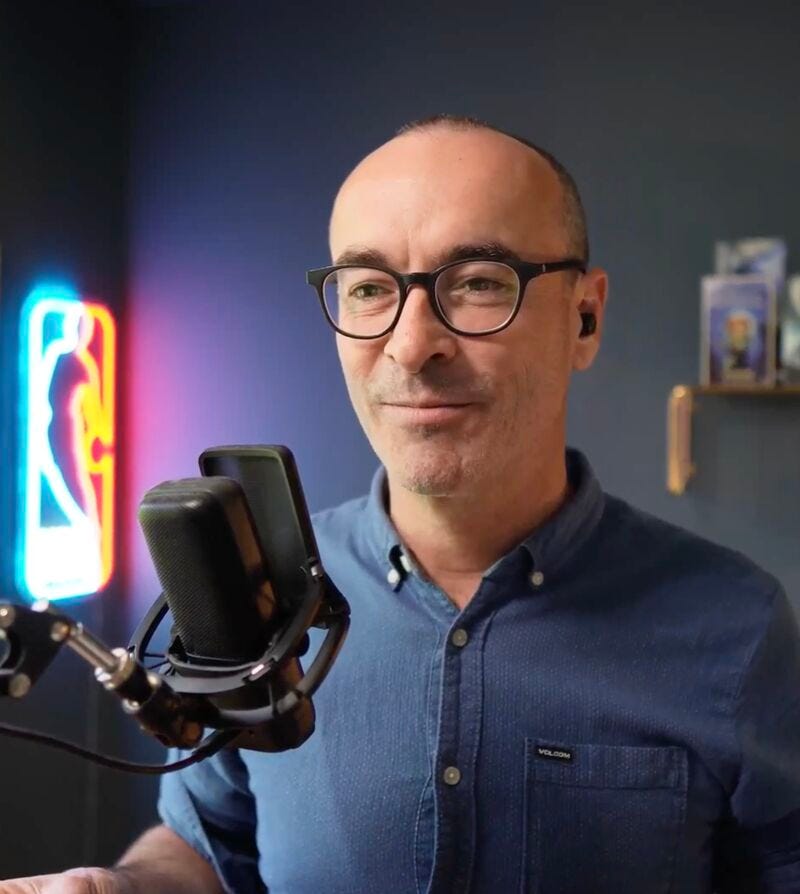The author of this post is Julien Petit
This reflection started during a series of deep working sessions with three entrepreneurs, preparing their fundraising strategy and refining their “Unique Insight.” This team was working on groundbreaking technologies, not mere features or software, but foundational protocols with the potential to reshape an entire industrie.
As we dug deeper into their strategic narratives, something kept happening: again and again, our conversations drifted back to familiar B2B SaaS frameworks: MVPs, traction metrics, go-to-market sequences, VP Sales hiring plans. These weren’t wrong, but they belonged to a different game. And the more we explored, the clearer it became that their challenges weren’t about product optimization they were about ecosystem construction.
They weren’t building dashboards. They were laying infrastructure.
What they truly needed was a shift in altitude toward high-level strategic thinking, sometimes bordering on industrial diplomacy. Their ambition wasn’t just to find early adopters or prove market signals. It was to align multiple stakeholders, influence standards, and embed their protocol into the core of a complex value chain.
(I won’t mention who they are or what their company does. The project is public, but still flying under the radar. When the founders read this, they’ll know I’m talking about them. 😉)
That’s when it hit me: we’ve trained a generation of founders to think too small and worse, to avoid thinking strategically. It’s not a lack of ambition, it’s that we’ve conditioned even the most visionary founders to prioritize tactics over strategy.
But the truth is, the talent is there. We just need to challenge it, support it, and help unleash the strategic thinking that’s already waiting to emerge.
⚔️ The Playbook Problem
For the past 20 years, the startup ecosystem has been built on one dominant battlefield: software. More specifically, internet-connected software, with B2B SaaS leading the charge. The intellectual infrastructure of our era books, incubators, accelerators, investor theses has all been shaped by this domain. As a result, we’ve built an arsenal of mental models, frameworks, and playbooks tailored to one type of innovation.
The problem is, we’ve started treating these models as universal truths.
Take The Lean Startup. Hailed as the Bible of modern entrepreneurship, it teaches a method grounded in software logic: rapid iterations, MVPs, customer feedback loops, and continuous deployment. But this book was written by a software founder for software founders, even though it was chanted as general gospel. And over time, the startup ecosystem mistook a local truth for a global rule. We’ve trained an entire generation of entrepreneurs to believe that all innovation must look like software.
And so we built hammers. Now we see nails everywhere.
But what if your venture isn’t a nail? What if you’re building an entirely new system? What if you’re not launching a product, but installing a protocol?
📡 The Qualcomm Problem
Try applying the Lean Startup playbook to a company like Qualcomm in its early days. It would’ve looked like madness. Long cycles, uncertain outcomes, deep R&D, heavy coordination, industry-wide implications. Nothing about Qualcomm fits the Lean Startup framework. Yet it’s one of the most impactful tech companies in history.
Why? Because it wasn’t playing solo.
When Qualcomm entered the wireless industry in the 1980s, they weren’t selling a product. They were creating an entire wireless communication protocol: CDMA. At the time, CDMA was considered borderline science fiction. It required digital encoding of voice data, real-time signal multiplexing, power management, and coordination between handsets and cell towers. Critics said it was impossible.
But Qualcomm’s founders understood Moore’s Law. They anticipated that, by the time they shipped, processing power would catch up to the demands of their vision. They were right.
Still, CDMA wasn’t a feature or a product. It was an ecosystem enabler. Qualcomm needed handset manufacturers, base station builders, carriers, and regulators all aligned. They had to:
Convince carriers to invest in infrastructure that didn’t yet exist
Manufacture their own prototype phones
Demonstrate working CDMA networks in cities like San Diego and New York
Engage in lobbying and standards-setting discussions
Secure patents across the entire signal processing chain
They even formed joint ventures with companies like Sony and Nortel to deliver end-to-end solutions. Why? Because unless they could say yes to every part of the carrier’s stack, from the tower to the chip, they had no shot.
🎧 Europe’s Qualcomm
It’s easy to romanticize American giants like Qualcomm when talking about system-level innovation. But let’s look closer to home. The most iconic startup ever born in Europe and arguably the only global category the continent has truly won in tech is Spotify. While the U.S. dominated search, social, semiconductors, smartphones, and virtually every other major tech category, Europe carved out a single uncontested victory: music streaming. And that win wasn’t the result of a lean MVP. Spotify, like Qualcomm, had to rebuild an entire ecosystem from scratch.
Spotify didn’t just launch an app. It had to reverse-engineer the music industry itself. In the late 2000s, piracy was rampant, trust between creators and platforms was nonexistent, and the major labels Universal, Sony, Warner had little incentive to cooperate. So Spotify gave them equity. Paid massive advances. Agreed to complex, unproven licensing terms. And pioneered a freemium model that served both user acquisition and rights-holder economics. This wasn’t product-market fit. It was stakeholder orchestration.
And like Qualcomm, they didn’t play solo.
Spotify partnered with telcos, lobbied regulators, and engineered its own DRM to combat piracy. But the breakthrough came when Sean Parker, Napster cofounder and early Facebook president, introduced Daniel Ek to Mark Zuckerberg. That meeting led to a deep integration into the Facebook social graph: playlists, live listening, viral shares. It was a turning point that catapulted Spotify into global awareness.
But Ek and Lorentzon’s ambition went further back. The very idea behind Spotify personalized recommendation at scale had already been prototyped years earlier by two American high schoolers: Mark Zuckerberg and Adam D’Angelo. Their project, Synapse, was a local AI-powered music recommender that read your Winamp history to predict what you’d want to hear next. Microsoft tried to acquire it. They said no. That same mindset build first, trust the data, tune for scale would later shape both Facebook and Spotify’s DNA.
Spotify wasn’t a growth hack. It was a full-stack realignment of value chains, regulation, and user behavior. And just like CDMA, it only worked because someone was crazy and connected enough to orchestrate the whole damn system.
🧠 Playbook Thinking = Solo Mode Thinking
None of this fits the SaaS playbook, particularly when looking at the Qualcomm case:
Product-Market Fit? Irrelevant if the market doesn’t exist yet
Customer Discovery? Doesn’t help if the customer can’t exist without a whole ecosystem
Iteration? Not feasible when you need GPS calibration, semiconductor power management, and a full standards body approval
Qualcomm’s success came from foresight, not feedback. They made an interdependent system work by pulling every lever technical, political, strategic, and industrial. Their insight was not just that CDMA was better. It was that they could do what no one else believed was possible, and do it before the world realized it needed it.
The SaaS playbook has trained us to think of entrepreneurship as a solo sport: one founder, one company, one path. Build something valuable, sell it to someone, scale. But the future of innovation might be multiplayer.
🕳️ The Invisible Mental Cage
The tragedy is, many VCs and founders don't even realize they’re trapped. Their brains have been rewired by years of pitch decks, accelerators, and Y Combinator blog posts (ironically, even Sam Altman didn’t follow the YC playbook when building OpenAI). Suggest a different way of building something that doesn’t rely on PMF or blitzscaling and they look at you like you're speaking Greek.
Especially younger VCs, who were raised in a world where SaaS is not just dominant. It is the definition of a startup.
There’s also a deeper myth embedded in the software-era startup mindset: the myth of the brilliant outsider. The idea that inexperience isn’t just acceptable, but almost desirable. That with the right pitch and the right playbook, a young founder with no domain expertise can disrupt an entire industry. The Lean Startup helped codify that narrative: find a niche, hack together a prototype, validate it just enough, raise some capital, and scale.
But that story rarely applies to ventures that touch infrastructure, deep science, or legacy industries.
Take Qualcomm. These weren’t amateurs. Before building CDMA, its founders had spent over a decade working at the frontier of military contracting, telecom systems, and complex engineering. They had deep institutional knowledge, built through long cycles of collaboration with industry giants (among them Wallmart). They understood the psychology of incumbents, the politics of standardization, the limits of physics. They weren’t learning as they built. They were executing on hard-won insight.
Sometimes the people best positioned to reinvent an industry... are the ones who actually know how it works.
Even iconic ‘young’ founders like Daniel Ek and Mark Zuckerberg were far from naïve outsiders. Daniel had launched several astonishing ventures before creating Spotify, and Mark had been building systems since childhood, starting with ‘ZuckNet’ at age 12 and continuing with what felt like a lifelong project under the label ‘A Mark Zuckerberg Production.’ Both had a deep, almost obsessive understanding of their respective technologies long before their breakout successes. Youth does not equal ignorance. But the myth that ignorance is an asset has distorted how we define legitimacy in innovation, often to harmful effect.
🧱 Rewriting the Game
Today, Qualcomm is the largest fabless semiconductor company in the world. But it started by acting like a full-stack infrastructure startup that understood one thing: to change the game, you have to build the board, the rules, and sometimes the players too.
So here’s the broader point.
Not every startup is software. Not every innovation needs to be iterative. And not every market exists when the first product ships.
We’ve spent two decades mastering the art of optimizing features in mature digital markets. But now, as the frontiers shift toward deeptech, energy, mobility, space, and hardware infrastructure we need new playbooks.
The SaaS brain is good at loops.
But some ventures require ladders.
Or scaffolding.
Or entire scaffolding industries.
Let’s stop pretending everything is a nail.
Otherwise, we’ll keep missing the opportunities that refuse to fit inside a buttoned-up Lean Canvas, until it’s too late.
🖼️ PS: For those wondering why Claude Shannon is the image for this piece, it’s a small tribute. A nod to the original architect of signal over noise. And a wink to Nicolas Debock at Eurazeo, who’s always been a Shannon fan and one of those rare VCs who genuinely thinks forward. I suspect this one will resonate.
The author of this post is Julien Petit
“Cutting Through The Noise” by Mighty Nine
Do you have a compelling story to influence the best VCs?
We are a VC fundraising investment bank.






